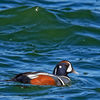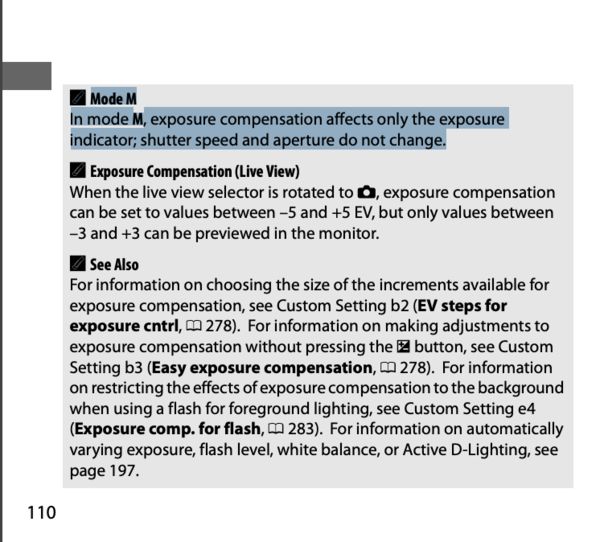Birds and exposure issues HELP please
Jan 6, 2019 16:58:48 #
There are a lot of very technical answers and some solutions offered but the single most difficult problem you had was the direction of lighting and your position relative to it. Even though the sky was overcast your scene was backlit. The sky and the amount of it included, even if by reflection off of the water, was the primary cause of your difficulty. In such cases, if you cannot reposition yourself at least get in as close as you can to your subject either physically or with longer lenses or a teleconverter and take your meter reading. If close enough fill flash can help. Pat
Jan 6, 2019 17:34:20 #
CindyHouk wrote:
Will that work if the grass is a light brown color like it is now? Or does that only work if the grass is the green color? I guess I could meter an evergreen tree instead of grass....hmmmm....that's an idea...will have to try that!
Actually yes if brown. I frequently use the ground if brown.
A lit evergreen tree works as well.
Most any mid tone material in direct light will work well.
Some say the hand works but unless I have a hand from someone else I find the adjustments are hard to make one handed. But it is an option.
Jan 6, 2019 19:44:24 #
swartfort wrote:
The talk of metering off of a hand or a car etc. Will work great for stationary subjects in close proximity. There is no denying that. But what about a subject on water (either smooth or choppy) 60 yards away? Probably a huge variation in light between the three feet of your arm and their location. ...
If your use spot metering and set exposure manually after metering your hand in the sunlight, it will be the same as the bird 60 feet away. Remember your light source is 93,000,000 miles away. 60 more feet won't make a difference.

Jan 6, 2019 23:20:53 #
I am sorry if my question derails this insightful discussion, and maybe it would be good for the OP to know, since someone said it here. I thought exposure compensation does nothing, if you are shooting in raw, since everything is control by the shooter. True or false?
Jan 7, 2019 00:15:21 #
Einreb92 wrote:
I am sorry if my question derails this insightful discussion, and maybe it would be good for the OP to know, since someone said it here. I thought exposure compensation does nothing, if you are shooting in raw, since everything is control by the shooter. True or false?
EC modifies the meter which in turn modifies all the semi automatic modes. I'm not sure about full auto. That includes raw and jpeg.
The meter does not modify manual mode since you choose the settings. That includes both raw and jpeg. I'm not sure if it modifies the histogram readout though.
Jan 7, 2019 07:58:33 #
GENorkus wrote:
The meter does not modify manual mode since you choose the settings. That includes both raw and jpeg. I'm not sure if it modifies the histogram readout though.
The meter does not modify manual mode since you choose the settings. That includes both raw and jpeg. I'm not sure if it modifies the histogram readout though.
I believe this is incorrect. I have worked with mulitple "series" of test shots using Manual with both increasing and decreasing EC shooting against a variety of backgrounds (Granted in JPEG only). I have seen the elimination of over and underexposure when viewing images on both my LCD screen (using the "blinkies") as well as on my computer screen in post. I realize this is anecdotal, but I have spent time working and learning, and somehow I see results. I also see in the "in camera" "?" information that there is no mention that EC only works in the semi-auto mode.
Does anyone KNOW the technical answer to this?
Jan 7, 2019 12:26:45 #
swartfort wrote:
I believe this is incorrect. I have worked with m... (show quote)
I found this in the manual for the 7200 and cannot say this is true for all Nikons, but this is consistent with my memory.
Jan 7, 2019 12:45:51 #
Einreb92 wrote:
I found this in the manual for the 7200 and cannot say this is true for all Nikons, but this is consistent with my memory.
Thank you so much. That makes perfect sense as I would set the EC and then meter thru the camera to center. I guess that made the difference as I was able to really minimize the over exposure/blown out highlight in the white part of the birds and most of the sky....
Thank you so much
Jan 7, 2019 14:19:59 #
Einreb92 wrote:
I found this in the manual for the 7200 and cannot say this is true for all Nikons, but this is consistent with my memory.

Jan 9, 2019 11:56:29 #
Cindy please consider investing some quality time with Nikon's User Manual for the D500.
It offers a very elegant and simple solution for the challenges you experienced.
Cindy turn to page 146 in your D500 Manual and review Bracketing which suggests AE Bracketing might be germane for this scenario... Press the BKT Button on the left side of the D500 and choose the number of shots and bracketing interval (page 147)
Also set your Release Mode to CH (Continuous High Speed). In your back-lit images I would suggest a 1 stop Bracket and a burst of 3 albeit you could choose 0.7 stop Bracket and a burst of 5.
So simple... so elegant... so effective... in under one second you are virtual guarantied of at least one ideal exposure... No learning curve involved... please try it, k?
Cindy I'm a commercial photographer and use this all the time with dynamic action scenarios (events) that don't afford the luxury of test shots, etc.
btw, you have to disable Bracketing by resetting the number of bracket shots to zero (0) after your photo session. It does not automatically reset by turning the D500 off... Experience is a very brutal teacher here... I only made this mistake once... lol
Hope this helps Cindy...
I wish you well on your journey...
It offers a very elegant and simple solution for the challenges you experienced.
Cindy turn to page 146 in your D500 Manual and review Bracketing which suggests AE Bracketing might be germane for this scenario... Press the BKT Button on the left side of the D500 and choose the number of shots and bracketing interval (page 147)
Also set your Release Mode to CH (Continuous High Speed). In your back-lit images I would suggest a 1 stop Bracket and a burst of 3 albeit you could choose 0.7 stop Bracket and a burst of 5.
So simple... so elegant... so effective... in under one second you are virtual guarantied of at least one ideal exposure... No learning curve involved... please try it, k?
Cindy I'm a commercial photographer and use this all the time with dynamic action scenarios (events) that don't afford the luxury of test shots, etc.
btw, you have to disable Bracketing by resetting the number of bracket shots to zero (0) after your photo session. It does not automatically reset by turning the D500 off... Experience is a very brutal teacher here... I only made this mistake once... lol
Hope this helps Cindy...
I wish you well on your journey...
Jan 9, 2019 19:02:44 #
Jan 9, 2019 19:03:55 #
IDguy
Loc: Idaho
Einreb92 wrote:
I found this in the manual for the 7200 and cannot say this is true for all Nikons, but this is consistent with my memory.
True for all Nikons.
Jan 9, 2019 19:09:50 #
IDguy
Loc: Idaho
CindyHouk wrote:
Thank you! I kept looking at the histogram but could never get the exposure to the right where I wanted it...then I just starting getting more confused and frustrated as I went!! I didn't even think about putting Auto ISO on -- then looking at the what camera picked for ISO -- that might have saved me some frustration..lol I will also check out the book you suggested.
BTW being a few stops underexposed with a D500 is not a problem because above a modest ISO it is ISO invarient. You should shoot in RAW to have full advantage of that.
It means that increasing the exposure in post processing yields the same result as increasing the ISO.
https://photographylife.com/iso-invariance-explained
Jan 9, 2019 19:13:12 #
IDguy
Loc: Idaho
Einreb92 wrote:
I am sorry if my question derails this insightful discussion, and maybe it would be good for the OP to know, since someone said it here. I thought exposure compensation does nothing, if you are shooting in raw, since everything is control by the shooter. True or false?
False. EC adjusts the actual exposure in A,S, and P modes. It adjusts the meter in M mode. So in M mode you can leave EC alone and just as well meter to the EC you want.
You might be confusing white balance.
Jan 9, 2019 19:24:07 #
IDguy
Loc: Idaho
mikeroetex wrote:
If your use spot metering and set exposure manually after metering your hand in the sunlight, it will be the same as the bird 60 feet away. Remember your light source is 93,000,000 miles away. 60 more feet won't make a difference. 

Actually it can make a huge difference if you are in the sun and subject in the shade, or vice versa. That was the case for many of the images in the link I posted above.
If you want to reply, then register here. Registration is free and your account is created instantly, so you can post right away.






